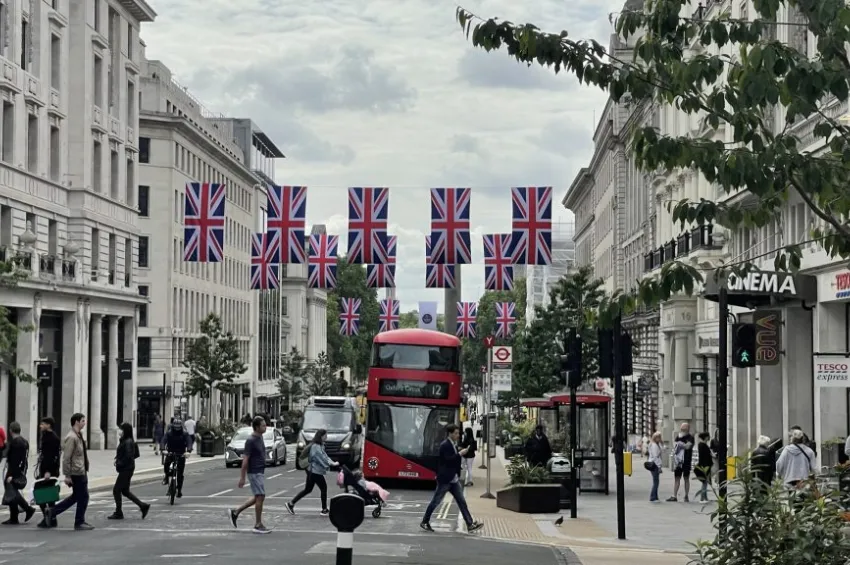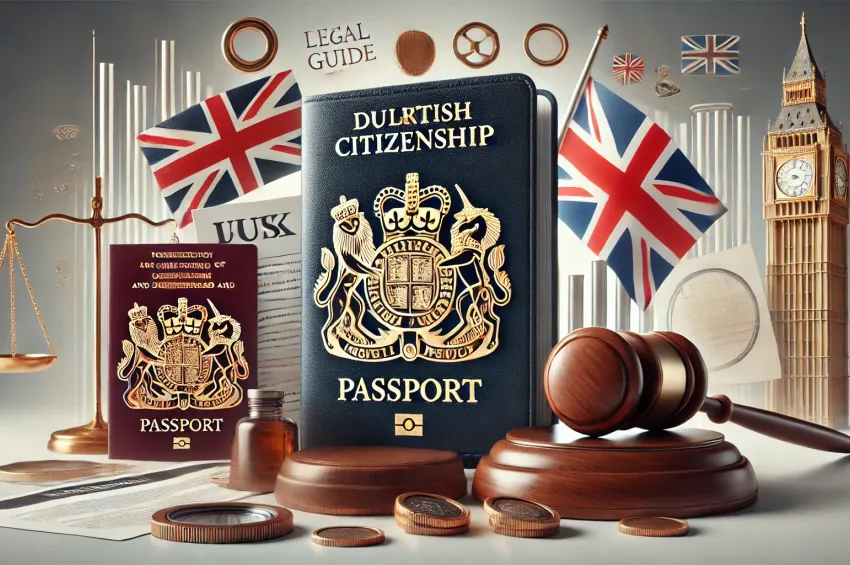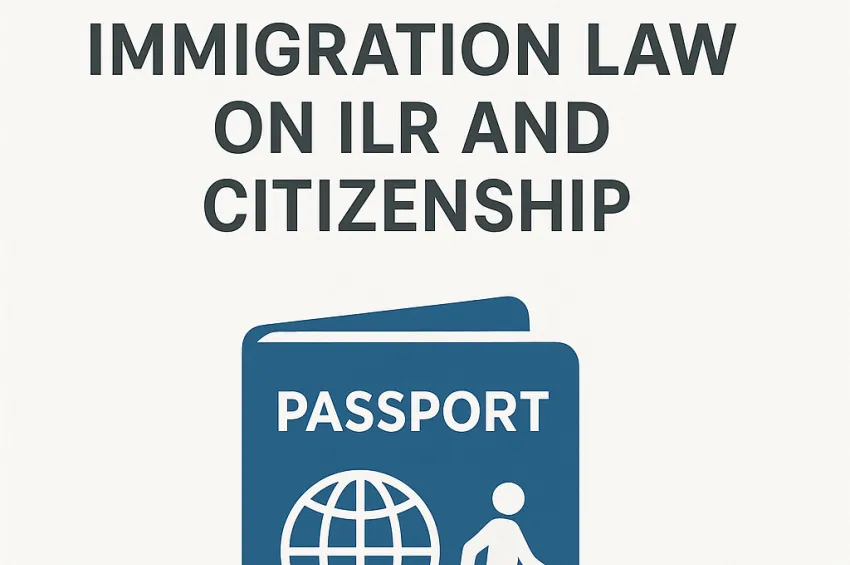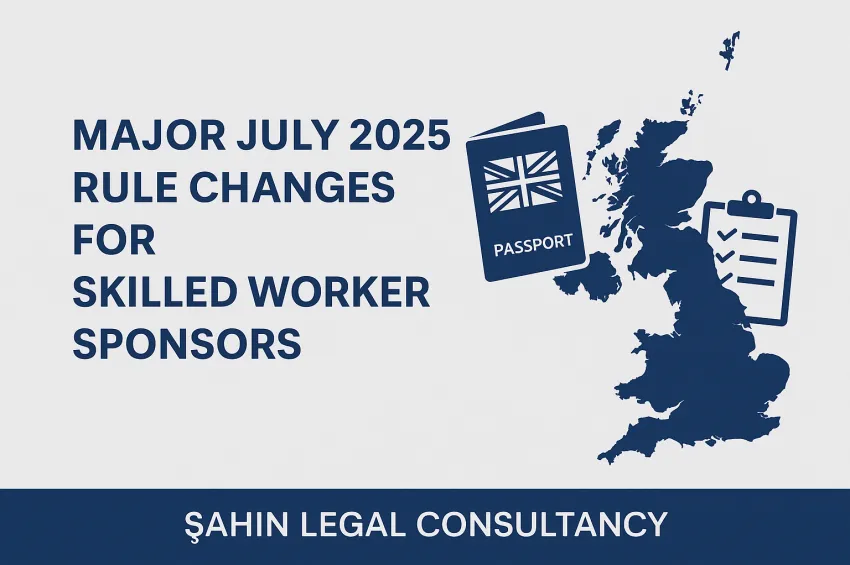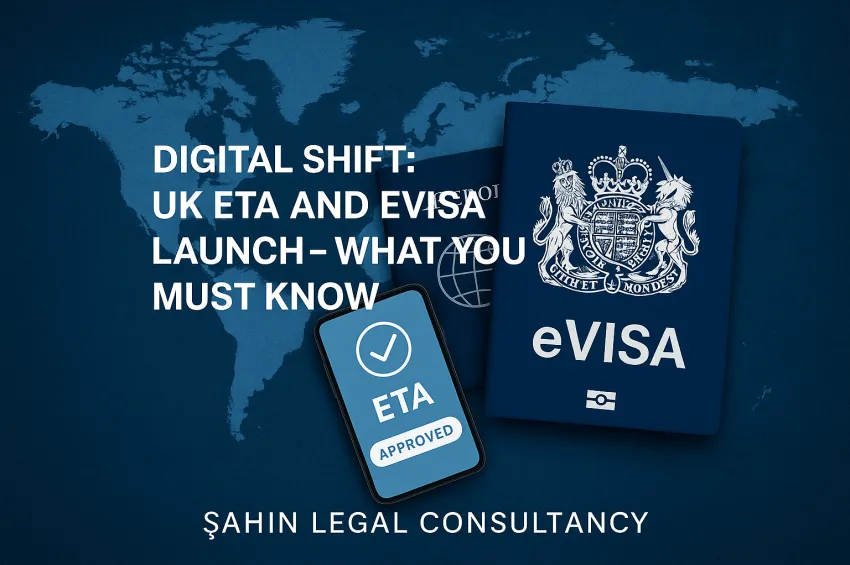
The UK ETA mobile application, which travelers can use to apply for an Electronic Travel Authorisation before visiting the UK.
Introduction: The United Kingdom is undergoing a digital transformation in its immigration and border control systems. Two major elements of this shift are the introduction of the UK Electronic Travel Authorisation (ETA) for visa-exempt visitors, and the rollout of the eVisa system – a fully digital immigration status for foreign nationals in the UK. These changes affect a broad audience: individual travelers (tourists, business visitors, and others from countries who previously didn’t need a visa), migrants living in the UK on visas or other permits, employers and landlords who need to check immigration status, and legal professionals who must understand the new procedures.
This comprehensive post explains everything you need to know about the ETA and eVisa, incorporating the latest guidelines as of 2025. It uses a formal tone appropriate for legal and official context, and crucially, it relies on current rules and policies (up-to-date for 2025) – not the old processes that are now being phased out.
UK Electronic Travel Authorisation (ETA)
What is the ETA? The Electronic Travel Authorisation is a digital permission to travel to the UK for short visits. It is not a visa, but rather a prerequisite for visa-free visitors to board transportation to the UK . In concept, it is similar to the U.S. ESTA or Canada’s eTA – a quick online authorization that travelers from certain countries must obtain prior to travel. The ETA does not guarantee entry; upon arrival, an immigration officer can still refuse entry if conditions aren’t met, but it authorises you to travel to a UK port of entry . The main purpose is to allow UK authorities to pre-screen travelers for security and immigration risks before they reach the UK border .
Who needs an ETA? If you are a national of a country that does not require a visa for short visits to the UK (commonly referred to as “non-visa nationals”), you will eventually need an ETA for visits up to 6 months (for tourism, family visits, business meetings, short study, etc.) . This includes travelers from Europe (EU/EEA countries), the United States, Canada, Australia, New Zealand, Japan, Singapore, and many others – essentially, all the countries that currently enjoy visa-free entry to the UK for tourism/business. The UK is phasing in ETAs in stages (see Timeline below). Notably, British and Irish citizens are exempt and do not need an ETA . Also, individuals who already hold a valid UK visa or immigration status (for example, a work visa holder returning to the UK, or someone with indefinite leave) do not need an ETA – their visa or BRP serves as their travel permission.
Other exemptions: If you’re a legal resident of Ireland who is not Irish (and you’re a non-visa national), you don’t need an ETA to travel to the UK from within the Common Travel Area (Ireland→UK) . Also, certain specific groups like diplomats or those with other specific UK entry clearances won’t need it. But most ordinary visitors from visa-free countries will require an ETA.
ETA Rollout Timeline: The ETA requirement is being introduced in phases between 2023 and 2025:
-
First Phase (2023): The scheme began with a pilot – Qatari nationals needed an ETA for travel to the UK on or after 15 November 2023 . Qatar was a test case, since previously Qataris could use an Electronic Visa Waiver form; that has been replaced by ETA.
-
Second Phase (Feb 2024): From 22 February 2024, the ETA expanded to nationals of Bahrain, Kuwait, Oman, Saudi Arabia, United Arab Emirates, and (initially) Jordan . This effectively phased out the old Electronic Visa Waiver system for Gulf states. (Note: Jordan was a unique case – in September 2024 the UK government revoked visa-free status for Jordan, so Jordanians now need a full visa instead of an ETA) . But for the other Gulf countries, ETA is now mandatory for visits.
-
Third Phase (Late 2024 to Early 2025): All other non-European visa-free nationalities were brought into the scheme. Starting 27 November 2024, the ETA application system opened to a large group of countries, including the United States, Canada, Australia, New Zealand, Japan, South Korea, Singapore, Malaysia, Brazil, Mexico, Argentina, and more . Travelers from these countries need an ETA if they intend to arrive in the UK on or after 8 January 2025 . In total, this list covers dozens of nationalities across the Americas, Asia, and Oceania (essentially, all remaining visa-waiver countries outside Europe). For example, a U.S. citizen with a trip planned to the UK from January 8, 2025 onwards must have an approved ETA before travel .
-
Final Phase (2025): European nationals are the last major group. From 5 March 2025, ETAs became available for nationals of EU/EEA countries (and other European micro-states like Andorra, Monaco, San Marino), for travel to the UK on or after 2 April 2025 . This means that by April 2025, all EU citizens (e.g. French, Germans, Italians, etc.) coming to the UK as visitors will also need to apply for an ETA in advance. This is a significant change because EU nationals have never needed any pre-travel authorization for UK visits before. It brings the UK in line with its policy of “taking back control” of borders post-Brexit, and coincides with the EU’s plan to implement its own ETIAS system (which will require UK citizens to obtain an EU travel authorisation in return).
By mid-2025, the ETA system is fully operational. If you are from a country that did not need a visa for UK visits, you now need an ETA (unless you fall under an exemption). Always double-check the latest list on the UK government site , as visa regimes can change (as seen with Jordan’s case).
How to apply for an ETA: The UK government has made the process online and smartphone-friendly:
-
The primary method is the “UK ETA” mobile app (available on iOS and Android) . Applicants are encouraged to use the app because it offers a streamlined experience – you can scan your passport’s chip, take a selfie, etc., all within the app. In fact, many applicants receive an almost instant decision when applying through the app, often “in minutes” if the application auto-clears the checks .
-
If you do not have a smartphone or prefer not to use the app, there is an online form on GOV.UK you can use instead . Both the app and website ask the same questions.
-
Information needed: To apply, you must provide your personal and passport details, a recent digital photograph (passport-style, which you can capture via the app or upload) , and answer a short set of eligibility questions. These questions cover things like your travel purpose, any criminal history, and any past immigration violations – similar to visa application questions, but fewer in number . You also pay the fee as part of the application.
-
ETA Fee: The current fee is £16 per person . (Initially it was communicated as £10, but the official GOV.UK site now lists £16 , likely updated in 2025). This fee is payable online (the app allows Apple Pay/Google Pay etc., or you can use a credit card) . The fee is non-refundable, even if your ETA is refused . Compared to other countries’ travel authorizations, £16 is relatively modest (for reference, the US ESTA costs $21) .
-
Processing time: While many get instant approval, applicants are advised to allow up to 3 working days for a decision . In rare cases, it might take longer if additional review is needed. It’s wise not to apply last-minute; build in some buffer before your trip.
-
Validity: Once granted, an ETA is valid for multiple trips over a 2-year period (or until your passport expires, whichever is sooner) . You can stay up to 6 months per visit on an ETA (standard visitor rules) . Keep in mind that although you can enter multiple times, border officers will watch for abuse of the visitor route – you should not be effectively living in the UK on successive visits. The rules clarify that frequent or long stays may lead to additional questioning, as travelers must still meet the “genuine visitor” requirement and not intend to settle or work illegally .
-
Using the ETA: The ETA is digitally linked to your passport. You do not get a paper or electronic certificate to show (there’s no need to print anything). Airlines and carriers will verify you have a valid ETA by checking your passport details against the UK border system before boarding. However, it’s recommended to note your ETA reference or have the confirmation email accessible just in case. Importantly, you must travel on the same passport you applied with . If you renew your passport, you’d need a new ETA.
If an ETA is Refused: Not everyone will get an ETA – if the automated checks or a caseworker find an issue (e.g., a serious criminal conviction, past immigration breach, or you gave incorrect answers), your ETA can be refused. If that happens, there is no appeal process for ETA refusals . Your recourse is to apply for a full Visitor Visa instead , which is a more in-depth application. The refusal notice will usually state a reason (for example, a match on a watchlist or a violation of immigration rules). In borderline cases, one could attempt to reapply with additional information if it was a misunderstanding, but generally a refused ETA means you must go through the visa process to visit the UK.
Special Considerations:
-
Dual Nationals (British & Other): If you have dual citizenship, including British, do not apply for an ETA on your non-British passport. As a British citizen you should be using your British passport to enter the UK. In fact, British (and Irish) citizens are wholly exempt from ETA . The Home Office has advised dual nationals to travel on their UK passport to avoid confusion . During the initial rollout, carriers are being lenient if a dual national shows up with, say, a US passport without an ETA but can prove British citizenship – but this is a temporary concession . In the near future, airlines may deny boarding if a supposed “visa-free” passenger has no ETA, not recognizing the person is actually a British citizen. British dual citizens can, as an alternative, get a “certificate of entitlement” in their foreign passport proving right of abode , but it’s simpler to just use the British passport. The bottom line: British/Irish nationals – use your home passport; everyone else – get an ETA.
-
Transit Passengers: Initially, the UK planned to require ETAs even for those transiting (connecting) through UK airports. However, after feedback, they introduced a temporary exemption for airside transit . If you remain airside and do not pass through UK border control during a layover, you currently do not need an ETA (for now). This policy is subject to review and could change. If you have to pass through immigration (e.g., to change airports or exit briefly), then normal rules apply – non-visa nationals would need ETA, visa nationals need a transit visa unless exempt.
-
Security and Data: The ETA requires submission of biometric and biographic data, which helps UK authorities screen travelers against watchlists and databases . This pre-clearance enhances security by preventing individuals who pose a threat or who have adverse immigration history from arriving unchecked.
In summary, the ETA is a crucial new requirement – make sure you obtain one before your trip if you’re coming from an affected country. As of 2025, airlines will deny boarding if you require an ETA and don’t have one (similar to how the US handles ESTA). There’s widespread public information campaigns about this, but last-minute travelers could be caught out, so double-check “Do I need a UK ETA?” well in advance of travel.
UK eVisa (Digital Immigration Status)
Parallel to the ETA for visitors, the UK is also revolutionizing the way immigration status is stored and verified for those who have visas or residence in the UK. This is the move to eVisas – a digital status system.
What is an eVisa? In UK terms, an “eVisa” means an electronic record of a person’s immigration status (their permission to enter or remain in the UK) that is accessible online. There is no physical document (no visa sticker in the passport, no Biometric Residence Permit card) once you have an eVisa. Instead, your status is recorded in the Home Office system and tied to your personal details (name, date of birth, passport number, etc.). You, and authorized third parties (like employers, landlords), can check your status via the gov.uk digital services. The UK started issuing digital statuses for some applicants in recent years (for example, EU Settled Status holders, or anyone who applied for a visa using the smartphone app received an eVisa). Now they are transitioning fully so that by the end of 2024, all migrants will have eVisas and physical documents will be phased out .
Key timeline and changes:
-
As of 1 January 2025, the only acceptable proof of immigration status for most purposes will be the digital eVisa . In fact, from 1 Jan 2024, the government was already encouraging everyone to switch to eVisa, but they gave a grace period throughout 2024 . All Biometric Residence Permits (BRPs) and Biometric Residence Cards (BRCs) (for EU family members) have an expiry date of 31 Dec 2024, regardless of what printed expiry is on the card . This was done deliberately – even if your visa actually runs to, say, 2026, your physical BRP stops being valid at end of 2024. This forces everyone onto the digital system.
-
Therefore, if you are a foreign national in the UK with a visa (work, study, family, etc.) or limited leave to remain, you should ensure you have transitioned to an eVisa by the end of 2024 . Failing to do so could cause issues with proving your right to work, rent, or re-enter the UK after travel.
How to get your eVisa: Many people already have one. For instance, if you applied for a visa after 2021 using the smartphone app (UK Immigration ID Check), you might never have been issued a BRP – you just got digital status. Also, anyone with EU Settlement Scheme status already has an eVisa by default . For those individuals, the main task is to keep your details updated (like if you renew your passport, you must update the eVisa system with the new passport number) .
If you currently have a BRP card (biometric residence permit), you will need to create a UKVI online account to access your eVisa. The Home Office has been emailing BRP holders in phases inviting them to switch. But now it’s open to all: you can go to the GOV.UK eVisa portal and set up an account . You will need to verify your identity to link your existing visa to this account. Typically, you’ll input your personal details, your BRP card number or a visa reference, and then use the UK Immigration: ID Check app (or website) to scan your documents (passport, BRP) and maybe take a selfie, similar to a visa application process . Once verified, your visa status will appear in your account and you’ll get a confirmation email that you now have an eVisa .
Those who have older documents (like a paper vignette in the passport or an ink stamp saying “indefinite leave to remain” from years ago) need an extra step: you must first apply for a No Time Limit (NTL) replacement, which results in issuance of a BRP, and then that can be converted to an eVisa . This is a free application but takes some time. Essentially, everyone is being moved onto a modern digital record.
Using the eVisa: Once you have a UKVI account with your eVisa, you can do things like:
-
Prove your Right to Work or Rent: Instead of showing a BRP card, you now generate a share code from the Home Office website and give it to an employer or landlord, along with your date of birth. They input that at the gov.uk “check rights” portal, and it shows your status (for example, “Tier 2 Skilled Worker visa, valid until 15/08/2027, work permitted”). This has actually been the required method for employers since April 2022 for most, but now it will be the only method as cards are gone .
-
Travel: When you enter the UK, border officers can retrieve your status via your passport scan. One tip: since nothing is in your passport, some travelers feel uneasy. It’s wise to carry your eVisa confirmation email or at least know your visa details in case you need to explain to airline staff or a border agent. However, airlines should be up to speed – they will check “Is there a visa linked to this passport?” in the system for visa nationals. You won’t get a visa vignette in your passport for new visas issued after the full rollout; instead, before travel the airline checks your passport against the Home Office database (similar concept to ETA checking).
-
Updates: You are responsible for keeping your digital record updated. If you get a new passport, you must sign in and add that document so that your eVisa links to the new passport number – otherwise, at the border the system may not find your status (since it’s tied to the old passport number). Also update your contact details if they change.
Support for Transition: The government and charities have put resources into helping vulnerable groups (like elderly migrants) transition to digital status . If someone doesn’t use the internet or has trouble, there are helplines and designated organizations (e.g., Migrant Help, Citizens Advice) funded to assist. HR teams have also been advised to inform any staff with BRPs of the need to switch .
Why this matters: For migrants, your proof of status is now intangible – no more residence cards to carry. This means you must be proactive in understanding how to prove your rights. For employers and landlords, you need to adapt processes to exclusively use the online checking service; physical cards will no longer be acceptable from 2025. The eVisa system is more secure (harder to forge or lose) and more convenient once adopted, but it’s a significant change from the old system of residence permits.
Common concerns: What if the system is down? The Home Office has assured that there are offline alternatives if needed, but by and large, outages have been rare. Individuals can keep a record of their visa grant notice, which contains a lot of info as backup. Additionally, while traveling, UK border systems have backups if they can’t retrieve a record immediately.
By moving to eVisas, the UK aims to have a “fully digital border” by 2025. This ties in with ETAs for visitors and advanced data systems. Practically, it means faster checks and more flexibility – for example, if an employer wants to verify someone, they no longer need to physically see a card; the digital proof can be given instantly. It also should eliminate the issue of people needing to replace lost BRP cards (which was common and costly).
Conclusion
The UK’s shift to digital immigration control – via the ETA for incoming visitors and the eVisa for those residing in the UK – represents a modernization of the system that brings both opportunities and new responsibilities for users.
For travelers: It’s crucial to remember before you book a flight to the UK, check if you need an ETA. As of 2025, almost everyone who isn’t a UK/Irish national or already a visa holder will need this quick online approval . The process is straightforward and inexpensive, but must be done in advance. This is one of the “must know” points because being denied boarding for not having an ETA could ruin a trip. The rule is new and may catch some off guard, but it is now part of the standard UK entry requirements. Planning ahead is the remedy.
For migrants and residents in the UK: Ensure you have set up your UKVI online account and that your immigration status is reflected there as an eVisa. Physical immigration documents are essentially obsolete after 2024 . If you haven’t received instructions, take initiative to do it yourself on gov.uk. This will protect you when evidencing your rights in jobs, housing, or services. It’s advisable to also educate your family members or anyone you know who might be less tech-savvy that this is the new normal.
For employers and legal professionals: These digital shifts mean your compliance and advising practices should be updated. No more copying of BRP cards for HR files – instead, verifying via share code. Legal representatives should guide clients on transitioning to eVisas and remind them of the requirement to apply for ETAs for visits (for instance, a work visa holder’s relatives from abroad coming to visit them will likely need ETAs). There may be an adjustment period where some stakeholders are unfamiliar with an eVisa “grant letter” instead of a vignette; attorneys can reassure and clarify.
In conclusion, the UK’s ETA and eVisa initiatives, as of July 2025, are at the forefront of a global trend towards digital immigration systems. The latest guidelines emphasize user-friendly processes (mobile apps for ETA, online accounts for eVisas) while also tightening security. Crucially, do not rely on old rules – for example, the days of simply showing up at Heathrow with just a passport (if you’re American or European) are ending; now you need that ETA clearance. Likewise, the days of getting a BRP card are over; now it’s all online. By staying informed and adapting to these changes, travelers and migrants can ensure smooth journeys and compliance. As always, refer to official UK government resources for the most up-to-date information, and when in doubt, seek professional advice.


